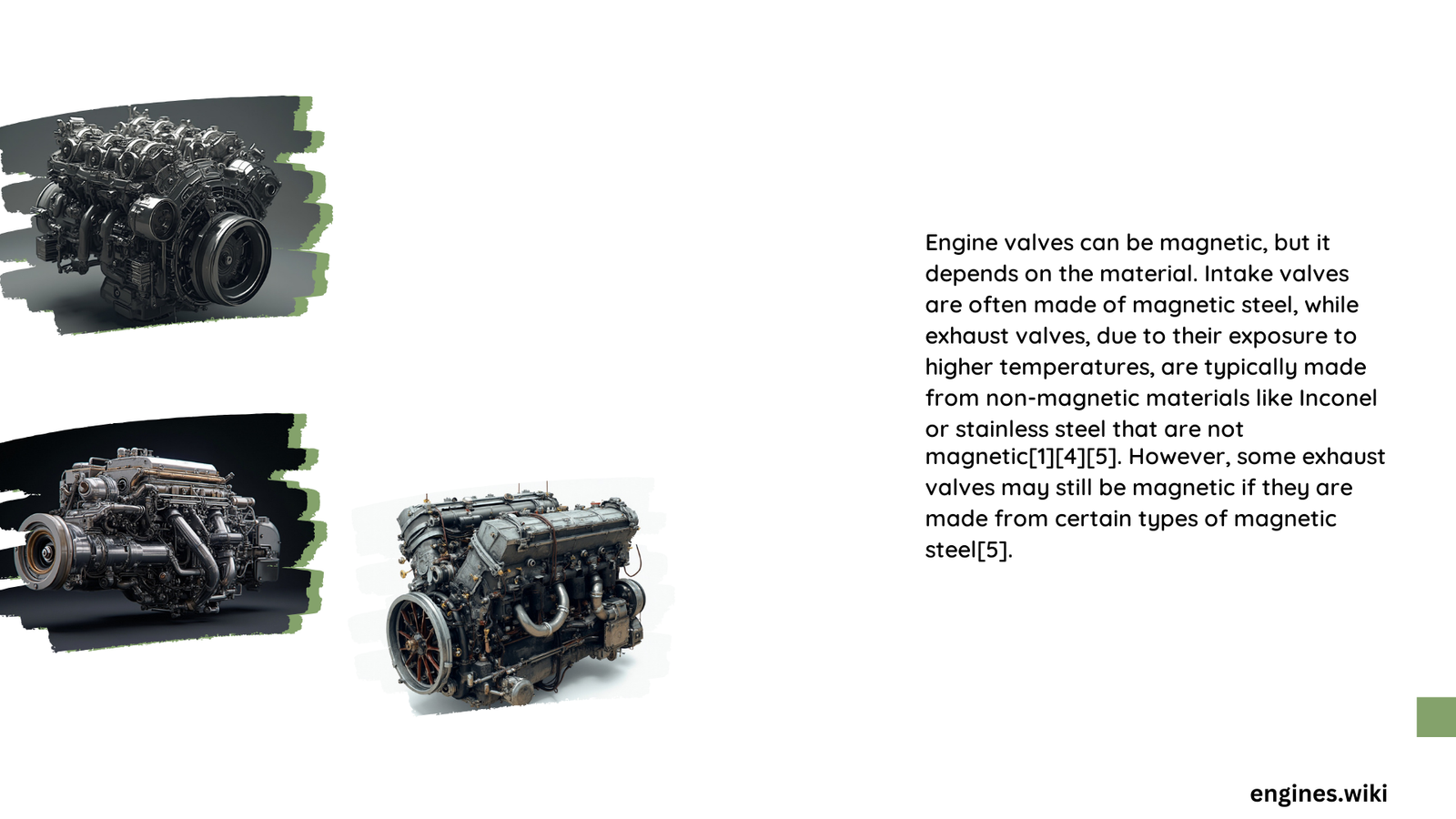Engine valves exhibit complex magnetic properties depending on their material composition. While some valve materials like martensitic steels are magnetic, others such as austenitic steels and titanium demonstrate different magnetic behaviors. Understanding these characteristics is crucial for engineers designing high-performance engine components, as the magnetic properties can influence material selection, thermal processing, and overall engine performance.
What Determines the Magnetic Nature of Engine Valves?
Material Composition and Magnetic Characteristics
Engine valves are primarily manufactured using three main material categories, each with unique magnetic properties:
Martensitic Steel Valves
- Magnetic Properties: Ferromagnetic
- Typical Applications: Exhaust and intake valves
- Example Alloy: 21-4N steel (EV8 specification)
| Material Type | Magnetic Behavior | Electrical Conductivity |
|---|---|---|
| Martensitic Steel | Highly Magnetic | 5-15% of copper’s conductivity |
| Austenitic Steel | Non-Magnetic | Similar to martensitic steel |
| Titanium | Paramagnetic | ~1.5% of copper’s conductivity |
Why Do Some Engine Valves Exhibit Magnetic Properties?
The magnetic characteristics of engine valves primarily depend on their crystalline structure and elemental composition. Martensitic steels, characterized by their hardened microstructure, naturally possess ferromagnetic properties due to their iron-based alloy composition.
Factors Influencing Magnetic Behavior
Several key factors determine an engine valve’s magnetic properties:
- Elemental Composition
- Iron content
- Alloying elements
-
Thermal processing techniques
-
Crystalline Structure
- Body-centered cubic (BCC)
- Face-centered cubic (FCC)
- Hexagonal close-packed (HCP)
Practical Implications of Magnetic Properties
Performance Considerations
- Strength: Magnetic materials often correlate with higher mechanical strength
- Wear Resistance: Martensitic steels offer superior durability
- Thermal Stability: Magnetic properties can influence heat dissipation
Advanced Material Selection Strategies
Engineers must carefully balance multiple factors when selecting valve materials:
- Mechanical Requirements
- Thermal Performance
- Cost-effectiveness
- Magnetic Characteristics
Specialized Applications
While most engine valves are made from magnetic or weakly magnetic materials, specialized applications might require unique material selections based on specific performance requirements.
Conclusion

The magnetic properties of engine valves are not a simple yes or no proposition but a nuanced characteristic dependent on material composition, manufacturing processes, and intended application.
Key Takeaways
- Martensitic steels are magnetic
- Austenitic steels are non-magnetic
- Titanium exhibits weak paramagnetic properties
- Material selection involves complex engineering considerations
Recommendations for Further Research
- Advanced metallurgical analysis
- Comprehensive magnetic property testing
- Emerging material development
